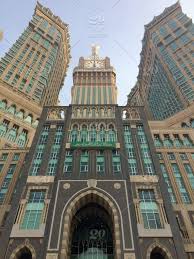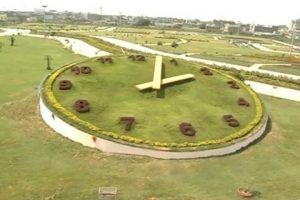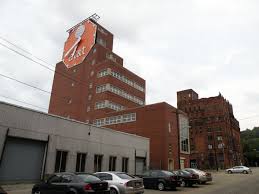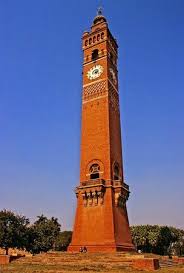In today’s digital world when cellphones give us the exact time anytime anywhere, it is difficult to imagine that not long ago, entire cities depended on a clock tower in the public square to know the time.
Most cities and towns had their own clock tower and many such towers were built with love and care to become architectural masterpieces.
London’s Big Ben, which turned 160 last Friday, is the most instagrammed landmark in the UK today.
The clock, towering over the Houses of Parliament, began keeping time on May 31, 1859. Actually, its original heavy iron hands had to be replaced with copper for it to start working.
According to Parliament Clock Maker Ian Westworth, London, “After 160 years of near continuous use the clock mechanism is in remarkably good condition. It has been well looked after over the years, but now we are cleaning, inspecting, painting and testing every single cog and wheel to ensure it can continue keeping time for the nation for another 160 years and beyond.”
The Big Ben is installed in the 96m-tall Elizabeth Tower inside Westminster Palace, the seat of the British Parliament, a Unesco World Heritage site.
There was an original tower with a bell and clock known earlier, called “Great Edward”, which got replaced in 1367. It too was demolished in 1707, making way for a sundial. In 1834, when a fire destroyed the Palace of Westminster, a competition was declared to design a new building. Architect Sir Charles Barry won the competition. He initially did not have a clock tower plan but included it in the new palace design in 1836.
The royal astronomer, Sir George Airy, set standout standards for the competitors. They were told to make the clock so perfect that the first stroke of each hour is accurate to within a second and to telegraph the clock’s performance twice a day to the Greenwich Observatory.
Airy asked his friend and lawyer Edmund Beckett Denison, an amateur clockmaker, to design it. In 1852, Edward John Dent, the Queen’s clockmaker, was appointed to build it. As Dent died in 1853, his stepson, Frederick, completed the Big Ben in 1854 at a cost of £2,500.
Denison’s major contribution was to invent the Double Three-legged Gravity Escapement mechanism to ensure external factors such as wind pressure do not affect the pendulum, making it highly accurate.
The escapement works with the pendulum; each swing of the pendulum opens one of the gravity arms, which in turn regulates movement.
Elizabeth Tower’s bell is called the Great Bell though it is better known as Big Ben, after Sir Benjamin Hall, first Commissioner for Works, 1855-1858.
The 2.28m high and 2.75m wide bell, weighing around 13.5 tonnes, was cast at Whitechapel Bell Foundry in East London, on April 10, 1858.
The bell is struck by a hammer from the outside and there are four quarter bells which chime every quarter hour. Clock engineers wind the cables three times a week. The Palace of Westminster’s neo-Gothic style is displayed on the clock dials.
Each 7m-diameter dial is made from cast iron. Each dial contains 312 separate pieces of pot opal glass, a type of glass with an opaque finish.
Under each clock dial there is a Latin inscription carved in stone: “Domine Salvam fac Reginam nostrum Victoriam primam” which means “O Lord, save our Queen Victoria the First.”
Penny coins are used to adjust time on the clock. One penny can adjust the speed by 0.4 seconds per day. The world has a number of other iconic clocks.

The Makkah Royal Clock Tower, in Saudi Arabia, is part of Fairmont Hotel and has the biggest 141ft diameter clock face, visible 25km away. About two million LED lights illuminate it.
The clock is on a 1,972 feet high complex with 120 floors. It is the third tallest building and fifth tallest free-standing structure in the world. The clock was built by German tower clock manufacturer PERROT GmbH & Co. KG Turmuhren und Läuteanlagen.
The clock’s four faces are covered with 98 million pieces of glass mosaics.
The Saudi coat of arms is displayed at the centre of each clock behind the dials. The minute hand is 75ft long and the hour hand 56ft long.

In Istanbul, the Cevahir Shopping and Entertainment Centre’s glass roof has one of the largest clocks in the world, with a 104.99-ft diameter. Built in 2005, the digits of the clock are about 10ft high.

India’s floral clock in Surat claims to be the third largest botanical clock in the world. It has a diameter of about 79.72 ft, with each hand weighing 1,763 pounds.
About 25 per cent of the clock’s area is a reinforced concrete slab where its machinery is fitted.
Chennai-based Clock India Company built the clock on a 22.98-acre plot donated by the Navin Fluorine Company.

Built in 1933 by Audichron in Pittsburgh, Pennsylvania, the Duquesne Brewery Clock has a 60 square ft-face with a 25-ft hour hand and a 35-ft minute hand.
It was designed by John Franklin and is powered by a 1.25 horsepower motor.

If London had its Big Ben, then Philadelphia had its Big Penn, a 50-tonne city hall clock that was the largest and highest in the world when installed. Interestingly, attempts were made to run it on compressed air by the chairman, Clock Committee, John S. Stevens and the job was given to Temperature Regulation Company of Milwaukee, at a cost of $27,960.
However, its elaborate system of valves, tubes, flywheels, cylinders and tanks failed to properly run the pneumatic contraption, prone to stoppages due to air and water leakages, unacceptable for a clock.
It is said that within an hour of its start, the clock’s hands on the north-facing side were halted by accumulation of ice. Eventually, four electronic synchronous motors were used to run the clock.

The Rathaus-Glockenspiel clock tower in Munich, Germany, was built in 1908. The 260-ft tower holding the mechanical clock is a tourist attraction today with its regular daily shows depicting 16th century stories through life-size figures.
One show recollects the lavish wedding of a 16th Century Bavarian Duke, Wilhelm V, in 1568, who built the first brewery in Munich.
Bavarian jousters in blue defeat knights of Lothingren in red, a repeat of the Royal joust which took place at the same place where the clock now stands.
Nearly 32 life-size figures and 43 bells are used. Many figures below the clock are that of barrel makers merrily dancing the traditional foot-slapping dance.

Similar to the Big Ben in London is the Rajabai Clock Tower in India, considered to be one of the tallest in India. It is 280-ft tall, making it one of the tallest clock towers in India.
The construction of this magnificent clock tower began in 1869 and was completed in 1878. A prominent broker paid for the tower when it was agreed that it will be named after his mother, Rajabai.
This clock tower is located inside the University of Mumbai campus. The clock was designed by English architect Sir George Gilbert Scott and was completed in 1878.
The clock is a fusion of Venetian and Gothic styles, the tower having one of the best stained-glass windows in the city.

The Spasskaya Tower or Saviour Tower, Moscow, also holds a famous clock. One of its architects is Scottish architect and clock maker Christopher Galloway.
The clock face has a 20ft diameter and is located in the historic Red Square in Kremlin. The clock was installed in 1625.
A unique facet about the clock is that it is arranged in such a fashion that unlike all other clocks, in which the hands move towards the numbers, Galloway made it in such a manner that here the numbers move towards the hand by movement of dial.

Lucknow’s Hussainabad clock tower was built in 1881 at Rs 1.75 lakh by the Hussainabad Trust, in honour of the first Lt Governor of United Province of Avadh, Sir George Couper.
It was designed in Gothic and Victorian style by Roskell Payne and is 220ft high. The clock has a 14ft-long pendulum and its dial is designed in the shape of a 12-petalled flower and bells around it.
Tokyo also has one of the tallest clock towers in the world at NTT Docomo Yoyogi Building in Shibuya. The clock, placed at a height of 240m, has a 15m diameter. The hands and numbers on the dial are all lit in such a way that they can be seen at night. The weather forecast is also depicted atop the tower.
Another known clock tower is at San Francisco Ferry Building, San Francisco, in California, US. The 245-ft tall tower is inspired from a 12th Century Spanish bell tower in Seville. The diameter of the clock’s face is 22ft and the tower has four clocks on four sides.


